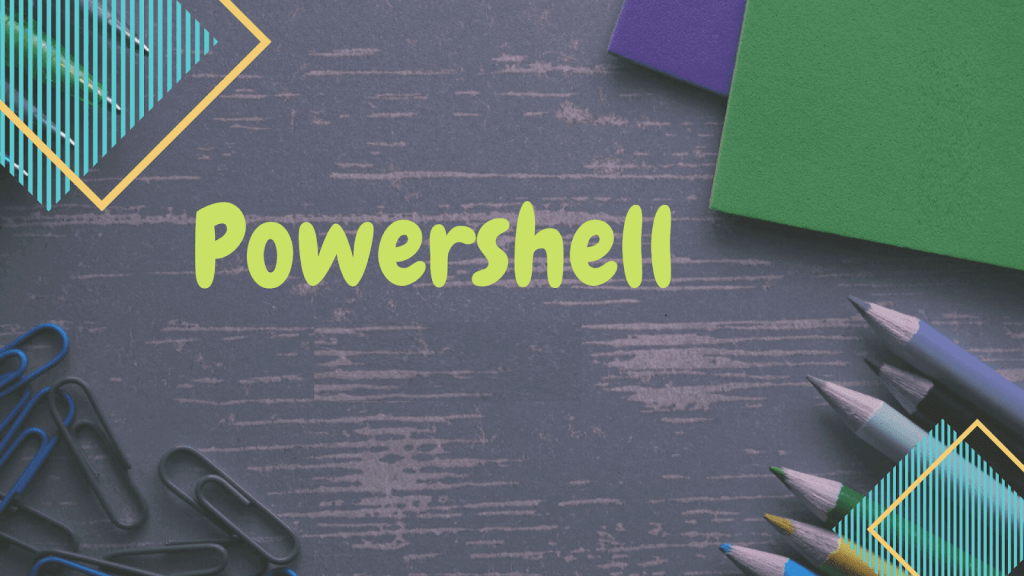
What is PowerShell?
Windows PowerShell is an automated task-based command-line shell and associated scripting language created by Microsoft. It is the new shell of Microsoft which combines the old command prompt (CMD) functionality with a new scripting instruction set with built-in system administration functionality.
It is designed especially for the system administrators. Its analogue in Linux OS is called as a Bash scripting. Unlike other shells, which accepts and return text, it is built on the top of the .NET framework, CLR (Common Language Runtime) and DLR (Dynamic Language Runtime). So, it can accept and returns .NET Framework objects.
It helps IT professionals to control and automate the administrations of the Windows operating system and other applications which run on the Windows server environment. PowerShell enables administrators to perform tasks on remote and local Windows system through full access to COM and WMI.
The commands in the Windows PowerShell are referred to as cmdlets pronounced as “command-lets”, where each cmdlet represents a specific function or task-based scripts.
Why should use PowerShell?
PowerShell is a popular tool for many MSPs because its scalability helps simplify management tasks and generate insights into devices, especially across medium or large networks. Here’s how PowerShell uses can transform your workflow:
- Automate time-consuming tasks: With cmdlets, you don’t have to perform the same task over and over, or even take the time for manual configuration. For instance, you can use cmdlets like Get-Command to search for other cmdlets, Get-Help to discover these cmdlets’ syntax and uses, and Invoke-Command to run a common script locally or remotely, even with batch control.
- Provide network-wide workarounds: Using PowerShell enables you to get around software or program limitations, especially on a business-wide scale. For instance, PowerShell can be used to reconfigure the default settings of a program across an entire network. This could be useful if a business wants to roll out a specific protocol to all its users—say, compelling users to either use two-factor authentication (2FA) or change their password every two months.
- Scale your efforts across devices: PowerShell can be a lifesaver if you need to run a script across multiple computers, especially if some of them are remote devices. If you’re trying to implement a solution on quite a few devices or servers at once, you don’t want to log in to each device individually. PowerShell can help you gather information about multiple devices within minutes, compared to the hours it would take to check each device manually. Once you enable PowerShell remoting, you’ll be able to scale your scripts to reach dozens (or more) of machines at once, allowing you to install updates, configure settings, gather information, and more—potentially saving hours of work and travel time.
- Gain visibility into information: The advantage of command-line interfaces like PowerShell is the access they provide to a computer’s file system. PowerShell makes hard-to-find data in files, the Windows Registry, and even digital signature certificates visible regardless of whether it’s housed on one computer or many. This information can then be exported for reporting purposes.
Finally, since every Windows 10 computer should have it pre-installed, it’s not difficult to learn PowerShell. As an MSP, knowing PowerShell not only puts you one step ahead of your competitors in terms of marketability, but gives you a host of useful abilities. If you know how to script cmdlets for PowerShell, it’s that much easier for you to scale your efforts and provide accurate, flexible, and fast service to customers.
Advantages of PowerShell:
- It is object based and that allows you to manipulate the output easily
- Easy to learn and implement
- You can even run legacy DOS commands
- You can also run .Net code in PowerShell.
Disadvantages of PowerShell:
Object-Based
One of the potential disadvantages of using Windows PowerShell is that it is object-based. With most shells, you rely on text-based commands to get the job done when writing scripts. If you switch to Windows PowerShell from some other type of shell, you’ll have to get used to a different way of thinking about things. This can be a problem that takes some time to get past for some users.
Security Risks
Another potential drawback of using Windows PowerShell is that it can create some potential security risks. Many IT professionals use it as a way to connect remotely to other computers and servers. When engaging in this process, PowerShell can leave some holes open for security breaches. This creates a potential for viruses, malware or other harmful programs to be installed in the server. If someone else who knows Windows PowerShell gets involved, it could cause problems.
Web Server
Another issue with Windows PowerShell is that it requires you to run a Web server on your server when utilizing remote functionality. This takes up additional space on a server. In many cases, companies will not want to take up more room and designate more resources to this on their own servers. If you are an IT professional working for a company, you may have to get approval from a higher-up before this is allowed.
I’m a DevOps/SRE/DevSecOps/Cloud Expert passionate about sharing knowledge and experiences. I have worked at Cotocus. I share tech blog at DevOps School, travel stories at Holiday Landmark, stock market tips at Stocks Mantra, health and fitness guidance at My Medic Plus, product reviews at TrueReviewNow , and SEO strategies at Wizbrand.
Do you want to learn Quantum Computing?
Please find my social handles as below;
Rajesh Kumar Personal Website
Rajesh Kumar at YOUTUBE
Rajesh Kumar at INSTAGRAM
Rajesh Kumar at X
Rajesh Kumar at FACEBOOK
Rajesh Kumar at LINKEDIN
Rajesh Kumar at WIZBRAND

